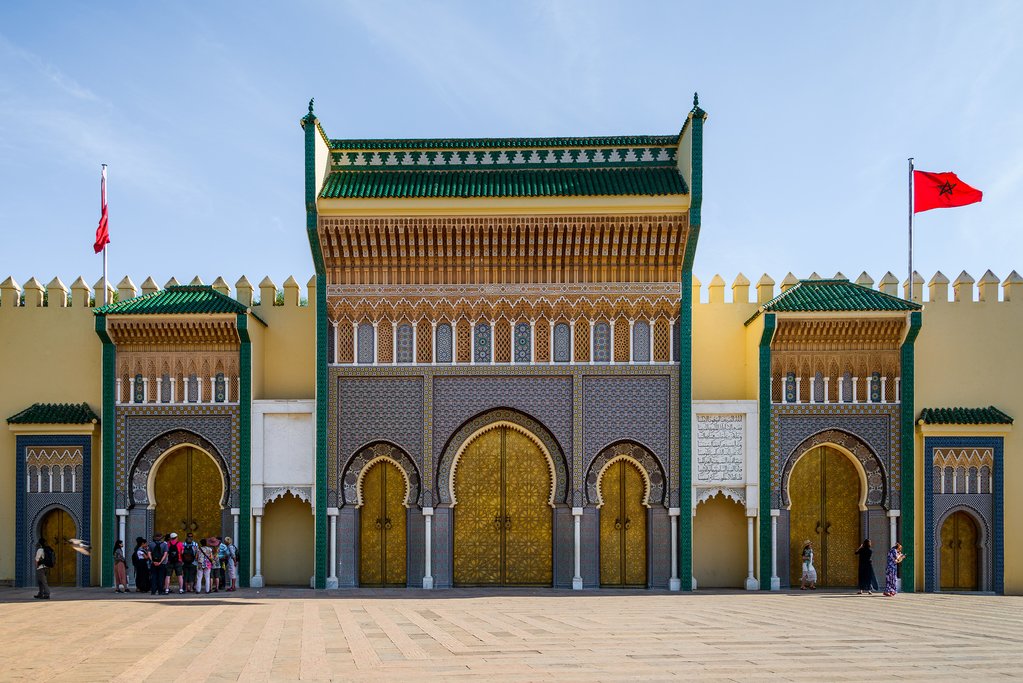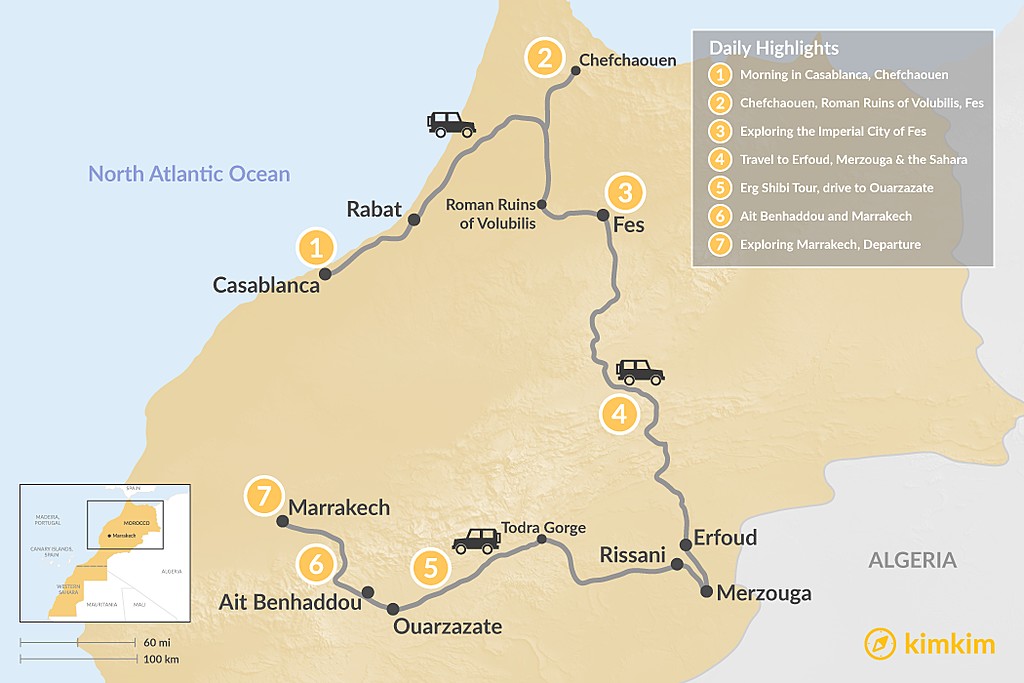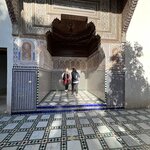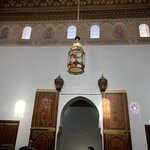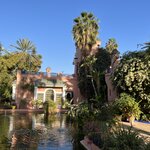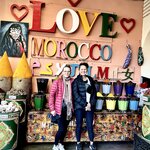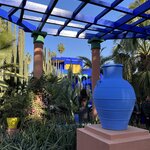Highlights
- Visit the Hassan II Mosque and the world's tallest minaret in Casablanca
- Wander the quiet, blue-washed streets of Chefchaouen
- Discover souks, tanneries, and artisan workshops in medieval Fes
- Explore sand dunes, oases, hidden valleys, and old kasbahs in the desert
- Experience an evening at Jemaa el-Fna Square - the busiest square in Africa
Brief Itinerary
| Day | Highlights | Overnight |
|---|---|---|
| Day 1 | Arrive; Morning in Casablanca, afternoon in Chefchaouen | Chefchaouen |
| Day 2 | Roman Ruins at Volubilis and Meknes and Fes | Fes |
| Day 3 | Fes: Exploring the Imperial City and medieval Medina | Fes |
| Day 4 | Middle Atlas: Erfoud, Merzouga and the Sahara | Erg Chebbi |
| Day 5 | Desert towns, lush oases, and film worthy landscapes | Ouarzazate |
| Day 6 | Aït Benhaddou Kasbah and Tizi n'Tichka Pass over the High Atlas | Marrakech |
| Day 7 | Marrakech: Exploring the Red City; Evening Departure |
Detailed Itinerary
Day 1: Morning in Casablanca, afternoon in Chefchaouen

Welcome to Morocco! Welcome to the modern coastal city of Casablanca. Casablanca's main attraction is the relatively modern and monumental Hassan II Mosque. Inaugurated in 1993, it sits on an outcrop jutting into the Atlantic and offers breathtaking views. It has a 690 feet (210 m) minaret—the tallest structure in Morocco and the tallest minaret in the world. What makes this mosque additionally unique is that it is one of the few mosques in the country non-Muslims are permitted to enter. Join a guided tour and appreciate the fine examples of Moroccan and Islamic artisanship.
Head north to the blue-hued streets of Chefchaouen in the Rif Mountains, stopping along the way in the present-day capital city of Rabat. Explore the medieval fortification of the Chellah Necropolis and wander its Roman and Islamic ruins. Visit the Bab Oudaia gate and the Kasbah des Oudaias, a 12th-century fortification built during the Almohad reign. Next, visit the Hassan Tower, a minaret of the incomplete mosque and Mausoleum of Mohamed V.
Carry on north to Chefchaouen. Named after the two peaks rising above the hillside town, Chefchaouen translates to "two horns". Wander the steep, cobbled streets and enjoy the picturesque blue-hued buildings. Relax in Place Outa el Hammam with a mint tea, before browsing colorful wares in the many shops. Visit the nearby kasbah (fort or fortification) and explore the 15th-century fortress and dungeon. As the day draws to a close, make your way uphill to the abandoned white Spanish Mosque to enjoy one last view of Chefchaouen as the sun sets behind the mountains.
Day 2: Roman Ruins at Volubilis, Meknes, and Fes

Meet your driver and head south toward Fes. Along the way, stop and stretch your legs to visit the Roman ruins of Volubilis. A UNESCO protected site, founded in the 3rd century BCE, it remains incredibly well-preserved. Next, stop and explore Meknes. A smaller version of Fes, Meknes offers a calmer medina and shopkeepers are not as pushy to make a sale. While Meknes is quite large, the two main areas of interest are the Ville Impériale (Imperial City) and the manageable medina. Be sure to check out the grand Bab al-Mansour gate and the Mausoleum of Moulay Ismail.
Carry on eastward to Fes. Before venturing into the medina, take the time to drive up the hill to the ruins of the Merenid Tombs for an all-encompassing view of the medieval city. The best time to visit the tombs is around dusk. The muezzin's calls to worship can be heard through the valley as the city lights begin to glow on, adding to the atmosphere. Return to your traditional riad for a warm meal and settle in for the evening.
Day 3: Fes: Exploring the Imperial City and medieval Medina

Fes is the oldest of the four Imperial Cities in Morocco and perhaps the most interesting and exciting to explore. It has the most complete medina in the Arab world and is relatively untouched since it was founded over 1000 years ago. Often considered the country's cultural capital, it is made up of three parts, two medina quarters, Fes el Bali and Fes el Jdid, and the more modern, French colonial influenced, Ville Nouvelle. Meet your guide and spend a half day learning about the history and culture as you navigate the narrow streets of the medinas.
Start in Fes el Bali at the Bab Boujeloud gate and enter the main thoroughfare of Talâa Kebira. Notice the Spanish and Tunisian influenced architecture as you make your way past shops and souks. One of the most unique sights in the old Medina is the tanneries and Chouara Tannery is no exception. Next, climb to the rooftop of a nearby leather shop for a better view of the 11th-century stone pots filled with dye and men at work still using centuries-old techniques.
Next, make your way to the 14th-century Al Attarine Madrasa, a beautiful example of Moroccan architecture and artisanship showcasing intricate zellij tilework. From there, find your way to one of the oldest still-operating universities in the world, Al-Qarawiyyin University next to the Al-Qarawiyyin Mosque (859 CE). Though the mosque is only open to Muslims, there are a few places where you can glimpse inside to its decorated interior. Cooking enthusiasts may also wish to join a cooking class and learn how to prepare a typical Moroccan meal before retiring for the evening.
Chat with a local specialist who can help organize your trip.
Day 4: Middle Atlas: Erfoud, Merzouga and the Sahara

Start your day bright and early and travel south toward Merzouga. Along the way, you will climb up an elevation of 7,146 feet (2,178 m) over the Col du Zad pass and through the cedar forests of the Middle Atlas mountains. Enjoy sightings of the local Barbary macaque monkeys before stopping for lunch in Midelt (the 'apple city'), relishing the nearby Moulouya River. Continue over the Tizi n'Talremt pass and into the Ziz Valley, known for its hidden oases and palm tree clusters. Along the road, you will see many fortified houses known as ksars—built to protect precious wares, including gold, salt, and spices.
Continue on to Erfoud, known for its date festival and fossil mining. Here you can visit a local collective to learn more about the process and meet some local artisans. Continue to Erg Chebbi, an extensive sea of sand dunes covering an area of 13.5 square miles (35 square km). Never stationary, the massive dunes shift and travel depending on the changing wind! Upon reaching Merzouga, switch gears and ride your camel through the dunes to your already-prepared-for-you camp. Climb a nearby sand dune to watch the sunset before returning to camp for a delicious dinner, relaxing by the campfire.
Day 5: Desert towns, lush oases, and film worthy landscapes

Catch the sunrise before renting a sandboard to test your skills. Leave the dunes and head to Khemliya to experience a traditional Saharan village—its people originally from Mali. Continue west to pass through a dramatic gate into Rissani. A market town, Rissani holds a livestock auction and is home to a "donkey parking lot", a site worth (hearing) and experiencing! Make your way to the desert town of Tinerhir before reaching the 984 feet (300 m) deep Todra Gorge. You will have time to explore the gorge and relax in the cool water of the shallow Todra River.
Travel through the Valley of a Thousand Kasbahs. Though many kasbahs are now in disrepair, local families still live in some of them. You may even come across nomads herding their animals. Head west to Kela'a M'gouna. Known for its Festival des Roses, here you can see extensively cultivated farmland bordered with fragrant rose bushes. Continue west to Ouarzazate, a gateway to the Sahara Desert made popular by the film industry. Join a studio tour and discover how the nearby desert landscapes have been featured in many films.
Day 6: Aït Benhaddou Kasbah and Tizi n'Tichka Pass over the High Atlas to Marrakech

Travel to nearby Aït Benhaddou. A UNESCO World Heritage site, Aït Benhaddou is believed to date from the 11th century during a time when it held an important position along the trans-Saharan trade route between Marrakech, Ouarzazate, and the southern desert. Follow the narrow streets up to the Granary for a view of the surrounding landscapes. From there, ascend the High Atlas mountain range and look out for the highest peak, Mount Toubkal (13,671 feet or 4,167 m). Stop near the top of the Tizi n'Tichka pass (7,415 feet or 2,260 m) to enjoy the views over the mountain range.
As you descend the High Atlas, you will notice a dramatic change in the climate and landscape. Soon you will be a part of the noise and clamor of Marrakech. After a long day on the road, settle into your hotel and spend the rest of the afternoon as you like. In the early evening, the main square—and busiest square in all of Africa—Jemaa el-Fna, comes alive with musicians, performers, snake charmers, games, and food stalls, a catch-all of entertainment. If you want to enjoy the spectacle from a distance, choose one of the many cafés surrounding the square and enjoy a meal.
Day 7: Marrakech: Exploring the Red City

Nicknamed the "Red City" for its red sandstone walls and buildings, Marrakech was once an important trading capital for Atlas mountain tribes and remains an exciting former imperial city. Begin exploring Marrakech's ancient medina, starting with the Koutoubia Mosque and Gardens. Though the mosque cannot be entered by non-muslims, it's worth checking out its 12th-century foundations and 253 feet (77 m) minaret. Visit the fountains and pools in the adjoining garden.
Indulge your senses as you explore the complicated labyrinth of souks, tucked behind ordinary restaurants and shops. Check out Souk el Attarin, Souk Chouari, and Souk Smata for a selection of spices, woodwork, and babouche (traditional Moroccan slippers). Visit Souk des Teinturiers or the dyers’ souk to see how cloth and yarn are dyed using traditional methods. Next, admire the fine example of Moroccan Islamic architecture of the Ben Youssef Madrasa, a 16th-century Koranic school, and note the ornate detail of its interior: carved cedar ceilings, sculpted plaster, and zellij tiling.
Head to the airport in the evening for your departure flight.
